In order to secure investment, the geothermal industry needs improved assessment methods to prove reliable resources.
In a renewable energy report on geothermal technology, the renewable energy news web site Renewable Energy World.com covered the SMU Geothermal Laboratory‘s research to locate and quantify the huge geothermal resources available for production from existing oil wells within Texas. The article drew on the expertise of SMU geothermal expert Maria Richards, director of the SMU Geothermal Laboratory.
The article by associate editor Megan Cichon, “Where’s the Heat? Geothermal Industry Seeks Resource Assessment Tools to Spur Development,” published April 16.
SMU’s Geothermal Laboratory is a renowned national resource for the development of clean, green energy from the Earth’s heat.
SMU researchers have completed a national mapping project backed by Google.org that makes it possible to access reliable geothermal data (heat flow and temperature-at-depth information) culled from oil and gas development all over the country. Their mapping project already has determined that there is potential for more electric generation from geothermal sources in West Virginia than is currently being produced by the state’s mostly coal-fired generation plants.
EXCERPT:
By Meg Cichon
Renewable Energy World
Commissioning a geothermal project is no easy task. Of all the renewable energy technologies, it has one of the longest project lead times – it can take an average of eight years from start to finish. Due to its heavy front-end expense, developers must be as certain as possible that they are spending time and money on a viable resource. So when drilling through hot rock, imagine the developer’s surprise — and utter disappointment — when equipment suddenly melts away after hitting magma.Though extremely rare, this exact scenario happened in 2009 at the Iceland Deep Drilling Project.
Located in the Krafla volcanic caldera, which is heated by centrally located magma chamber, drilling was expected to reach 4-5,000 meters based on preexisting modeling data and nearby well depths. But at little more than 2,000 meters, after days of slow, difficult progress, drillers were met with dramatically reduced resistance as the equipment shot straight through rock and into super-hot magma.
Since this mishap, the project team decided not to close off the well, but attempt to take advantage of the super-hot resource — an accomplishment in itself. However, this case brings up a long-standing issue in the geothermal industry: resource assessment.
It Starts with Data
Resource assessment starts with information. Existing geothermal data — including heat maps, existing well locations, geological surveys — can be a project developer’s best friend. However, this information had previously been scattered, disorganized, and simply impossible to find. Enter initiatives such as the U.S. Department of Energy’s National Geothermal Data System (NGDS).Realizing the need for organized information, the Geothermal Technologies Office designed an information network that adds data from more than 10 information hubs across the U.S., and puts them in one centralized location. NGDS is also expanding its reach abroad.
Learn from Experience
The Southern Methodist University (SMU) Geothermal Lab, already a huge asset to the NGDS, is currently looking to a more experienced industry for geothermal opportunity. At the Renewable Energy World North America Conference and Expo, Maria Richards, coordinator at the SMU Geothermal Lab, explained that the program is now culling data of all the existing abandoned oil and gas bore wells in the United States.The geothermal industry can take advantage of these wells and either co-produce with existing oil and gas plant, or go beyond that and revitalize the wells to produce geothermal electricity. In Texas alone, there are more than 3,100 oil fields with “extractable” thermal energy. “The infrastructure already exists,” said Richards, “we might as well exploit it.”
Follow SMUResearch.com on Twitter.
For more information, www.smuresearch.com.
SMU is a nationally ranked private university in Dallas founded 100 years ago. Today, SMU enrolls nearly 11,000 students who benefit from the academic opportunities and international reach of seven degree-granting schools. For more information see www.smu.edu.
SMU has an uplink facility located on campus for live TV, radio, or online interviews. To speak with an SMU expert or book an SMU guest in the studio, call SMU News & Communications at 214-768-7650.
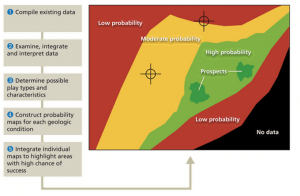

 Conventional vs. modern: Repertoire drives opera house identity, market share
Conventional vs. modern: Repertoire drives opera house identity, market share Women have made strides for equality in society, but gender gap still exists in art museum directorships
Women have made strides for equality in society, but gender gap still exists in art museum directorships Search for dark matter covers new ground with CDMS experiment in Minnesota
Search for dark matter covers new ground with CDMS experiment in Minnesota NOvA experiment glimpses neutrinos, one of nature’s most abundant, and elusive particles
NOvA experiment glimpses neutrinos, one of nature’s most abundant, and elusive particles SMU scientists to deploy seismic monitors in North Texas region near Azle, Texas
SMU scientists to deploy seismic monitors in North Texas region near Azle, Texas Parents less likely to spank after reading briefly about its links to problems in children
Parents less likely to spank after reading briefly about its links to problems in children Wall Street’s short sellers wrongly maligned — detected red flags ahead of US financial crisis
Wall Street’s short sellers wrongly maligned — detected red flags ahead of US financial crisis KERA, NOVA: SMU researcher Peter Weyand discusses the upper limits of human speed.
KERA, NOVA: SMU researcher Peter Weyand discusses the upper limits of human speed. The Undying Radio: Familiarity breeds content when it comes to listeners and music
The Undying Radio: Familiarity breeds content when it comes to listeners and music Mosquito indexing system identifies best time to act against potential West Nile Virus outbreaks
Mosquito indexing system identifies best time to act against potential West Nile Virus outbreaks Sweden, SMU psychologists partner to launch parenting program that reduces child abuse
Sweden, SMU psychologists partner to launch parenting program that reduces child abuse Chemical probe confirms that body makes its own rotten egg gas, H2S, to benefit health
Chemical probe confirms that body makes its own rotten egg gas, H2S, to benefit health Study: High-volume Bitcoin exchanges less likely to fail, but more likely to suffer breach
Study: High-volume Bitcoin exchanges less likely to fail, but more likely to suffer breach Musicians who learn a new melody demonstrate enhanced skill after a night’s sleep
Musicians who learn a new melody demonstrate enhanced skill after a night’s sleep Study finds that newlyweds who are satisfied with marriage are more likely to gain weight
Study finds that newlyweds who are satisfied with marriage are more likely to gain weight Fruit flies fed organic diets are healthier than flies fed nonorganic diets, study finds
Fruit flies fed organic diets are healthier than flies fed nonorganic diets, study finds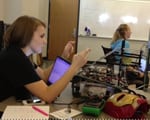 Center for Creative Leadership to study innovative learning method of SMU Lyle School of Engineering
Center for Creative Leadership to study innovative learning method of SMU Lyle School of Engineering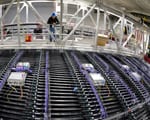 NOvA neutrino detector in Minnesota records first 3-D particle tracks in search to understand universe
NOvA neutrino detector in Minnesota records first 3-D particle tracks in search to understand universe Parenting program tackles child abuse and neglect among formerly homeless families
Parenting program tackles child abuse and neglect among formerly homeless families
 To book a live or taped interview with David Blackwell in the SMU
To book a live or taped interview with David Blackwell in the SMU 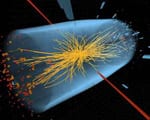
 Human diabetes has new research tool: Overfed fruit flies that develop insulin resistance
Human diabetes has new research tool: Overfed fruit flies that develop insulin resistance
 Ancient tree-ring records from southwest U.S. suggest today’s megafires are truly unusual
Ancient tree-ring records from southwest U.S. suggest today’s megafires are truly unusual
 College students willing to donate genetic material to biobanks for research
College students willing to donate genetic material to biobanks for research Study: Nearly two-thirds of EU citizens are marginalized by English-language dominance
Study: Nearly two-thirds of EU citizens are marginalized by English-language dominance From ‘Green Card’ to ‘Thin Blue Line’: Lawtalk research looks at popular legal expressions
From ‘Green Card’ to ‘Thin Blue Line’: Lawtalk research looks at popular legal expressions Study: Most Texas ISDs that are teaching the Bible are skirting 2007 state law
Study: Most Texas ISDs that are teaching the Bible are skirting 2007 state law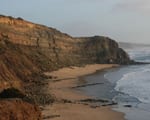 Study finds Jurassic ecosystems were similar to modern: Animals flourish among lush plants
Study finds Jurassic ecosystems were similar to modern: Animals flourish among lush plants